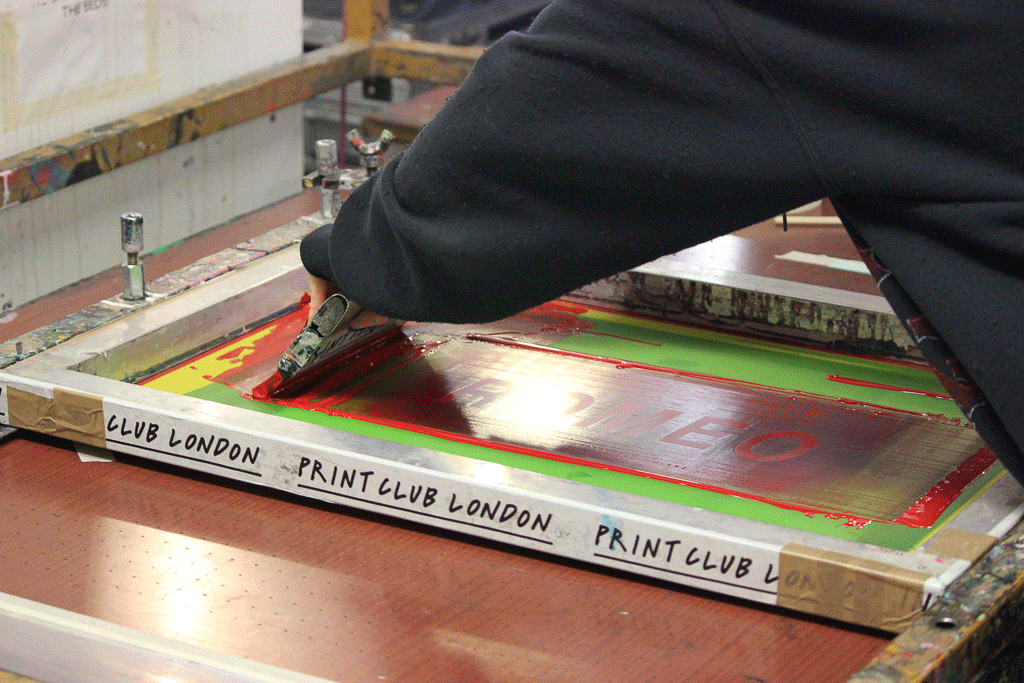ChatGPT said: What customers are saying in 10:9 Design reviews: real experiences
Wiki Article
The Vital Overview to Recognizing Screen Printing and Its Versatile Utilizes
Screen printing has an abundant background that dates back to old times, progressing right into an advanced strategy utilized across numerous sectors today. This overview checks out the ins and outs of the screen printing process, outlining its applications in advertising, fashion, and home decoration - 10:9 Design Texas. Recognizing these basics can open up creative potential for both business and creative jobs. The adhering to areas will certainly reveal crucial pointers and strategies to boost one's screen printing endeavorsThe History of Screen Printing
Screen printing has origins that map back centuries, its evolution reflects the imaginative and technical advancements of different societies. Stemming in ancient China, the strategy was at first used for enhancing textiles and later spread to Japan, where it ended up being important to Ukiyo-e woodblock printing. The approach moved to Europe in the 18th century, where it gained appeal among craftsmens and business printers. The invention of photo emulsion in the 20th century revolutionized screen printing, allowing for even more elaborate layouts and greater performance. Musicians like Andy Warhol further pushed its popularity, utilizing the tool to develop renowned jobs that mixed commercialism and art. By the late 20th century, screen printing had developed itself as a flexible method, employed in fashion, advertising and marketing, and art. Today, it continues to advance, integrating electronic modern technology and broadening its applications across numerous industries.The Screen Printing Refine Explained
Screen printing changes creative visions into tangible styles with a collection of exact steps. An image is created and after that moved onto a screen, typically made of fine mesh material extended over a structure. A light-sensitive solution is put on the screen, which is revealed to light, setting in locations not covered by the photo. After rinsing the unhardened solution, a stencil is developed.Next off, the screen is put over the substrate, whether it be textile, paper, or another product. Ink is then pressed with the open areas of the stencil using a squeegee, transferring the layout onto the substrate below. This procedure can be duplicated for several colors, requiring separate displays for every tone. The printed product is cured making use of heat to guarantee the ink adheres properly, resulting in a resilient, vivid design ready for use.
Kinds Of Screen Printing Techniques

Furthermore, specialized strategies, such as discharge screen printing, eliminate dye from the fabric to create softer prints, while aluminum foil screen printing applies metal foil to achieve a shiny finish (10:9 Design Abilene). Each technique offers distinct characteristics, accommodating numerous imaginative requirements and production ranges, ultimately increasing the possibilities within the official website screen printing domain
Applications of Screen Printing in Different Industries

Additionally, the signage and advertising and marketing markets make use of screen printing for creating captivating display screens and banners. This approach permits vibrant colors and intricate styles that catch focus. In electronic devices, screen printing is employed for applying conductive inks to motherboard, important for component links. The home style industry accepts screen printing to generate unique layouts on textiles and wall art. Overall, screen printing acts as a critical device across varied areas, boosting products with individualized and aesthetically appealing graphics.
Tips for Successful Screen Printing Projects
While carrying out a screen printing project, mindful focus to information can considerably improve the last result. First, picking high-grade materials is essential; this includes the screen, inks, and substratums. Using appropriate mesh matters can affect ink deposition and information resolution. Prep work is similarly essential; complete cleaning of displays and appropriate direct exposure times assure crisp prints.Next, accurate enrollment is crucial for multi-color prints. Making use of alignment tools can assist accomplish precise layering. Furthermore, testing prints on scrap materials prior to production assists determine prospective problems without losing resources.

Often Asked Questions
What Products Are Ideal for Screen Printing on Fabric?
Cotton and polyester blends additional hints are optimal for screen printing on material as a result of their durability and ink absorption. Additionally, specialized fabrics like silk or canvas can produce one-of-a-kind textures and finishes, enhancing the general layout top quality.How Do I Tidy and Maintain Screen Printing Devices?
To cleanse and keep screen printing equipment, one must frequently wash displays with appropriate solvents, check mops for wear, lubricate relocating parts, and shop all products in a dry, dust-free environment to extend their lifespan.What Are the Environmental Influences of Screen Printing?
Screen printing can have substantial ecological effects, consisting of chemical waste from inks and solvents, water use throughout cleansing processes, and power intake. Lasting techniques and environmentally friendly materials are essential for decreasing these unfavorable impacts.Can Screen Printing Be Done in the house Effectively?
Screen printing can be properly done at home with the right materials and strategies. Hobbyists can develop quality prints, though success relies on their ability degree, devices, and understanding of the procedure involved.
What Are the Prices Connected With Beginning a Screen Printing Business?

Beginning a screen printing organization involves expenses for tools, products, and office. First costs commonly range from a few hundred to several thousand bucks, depending upon the scale, quality of machinery, and wanted manufacturing capability.
Screen printing has a rich background that dates back to ancient times, progressing into an innovative method made use of throughout different markets today. An additional method, rotating screen printing, uses cylindrical screens, helping with constant printing on material rolls, consequently improving efficiency for massive manufacturings. Additionally, specialty strategies, such as discharge screen printing, eliminate dye from the fabric to produce softer prints, while foil screen printing uses metallic aluminum view it now foil to achieve a glossy finish. In the fashion industry, screen printing is extensively used to produce vivid layouts on apparel, allowing brand names to display their distinct styles. Cotton and polyester blends are excellent for screen printing on fabric due to their sturdiness and ink absorption.
Report this wiki page